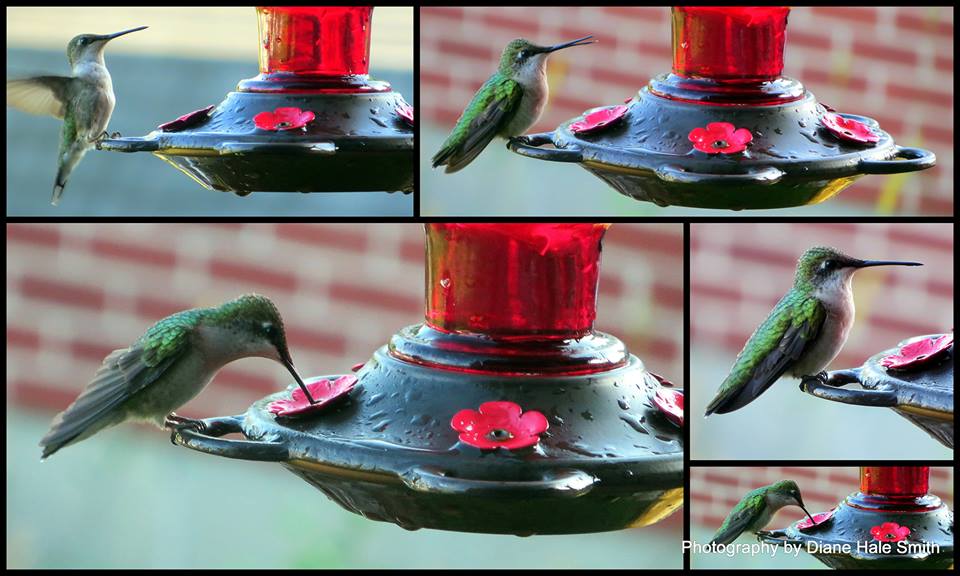Red. Blood red. Fire engine red. Crimson.
That’s what hummingbirds like. These magnificent little birds are drawn to the color red like iron is drawn to a magnet, cats to catnip, humans to chocolate.
Where I used to work, there was a bright red fire extinguisher bolted next to one of the doors, and sometimes when we left the door propped open, a hummingbird would fly in and spend quite a lot of time trying to suck nectar from the tube-shaped nozzle. I once made the mistake of wearing a red t-shirt on a hike—this was in Arizona—and I was constantly buzzed by hummers, going ZZZZZZZZZZZZ in my ear like giant wasps and making me jump every time. Red underwear hung on a clothesline, red lawn chairs, Bloody Marys on the patio, you name it—if it’s red, hummingbirds will check it out.
Why is this? What’s the deal with red? Perhaps hummingbirds prefer red flowers because they often offer large amounts of nectar. Hummingbirds with their constant activity (heart rate 200 beats a minute) need quick sugar fixes and have no time to waste getting tiny sips of nectar from tiny blossoms. They like the big shaggy red heads of bee balm, the hanging fountains of fuchsia—big blossoms they can hover in front of, and get a big hit of energy.
That, of course, is the reason hummingbird feeders are colored red.
When the idea of feeders for hummers first came up, the feeders were made of clear glass or plastic, and the sugar solution inside had red dye added to it. However, there’s a controversy hotly raging on the Internet and elsewhere about the use of red dye. The companies that manufacture it swear up and down that it’s completely safe…but then that’s what people said about other apparently sure-fire commercial ideas, like DDT, or the Titanic. Seems to me that if red dye were affecting hummingbirds’ delicate metabolisms (fifty wingbeats per second) in subtle ways, it would be hard for humans to tell. How often are dead hummingbirds autopsied?
Here’s a quote from a website called The Zen Birder: “The dye in colored nectars is red dye #40, named Allura Red AC. Red dye #40 was originally made from coal tar, but it is now made mostly from petroleum. Read that last sentence again, please. I don’t know about you, but that doesn’t sound good for ingestion by me or by hummingbirds. In Europe, red dye #40 is not recommended for consumption by children. (Source: www.3dchem.com). Admittedly, there is no scientific proof that red dye #40 definitely harms hummingbirds but knowing its source, why chance it, especially if it has no benefits to the hummingbirds and will not attract hummingbirds any more than clear nectar does.”
– See more at: http://wildbirdsunlimited.typepad.com/the_zen_birdfeeder/2010/07/top-5-reasons-to-not-use-red-hummingbird-nectar.html#sthash.xrByREtR.dpuf
And really, there’s not much point to arguing about it, because there’s a simple remedy. Flower nectar, after all, isn’t red–flowers are. So just use a feeder made of red plastic, with a clear sugar solution inside, like the one in the photo. Problem solved. Enjoy the hummers!
Many thanks to Diane Hale Smith for this study of hungry hummingbirds.





OMG! These pictures are amazing!! Nature is amazing! Thanks for bringing it to us every day.